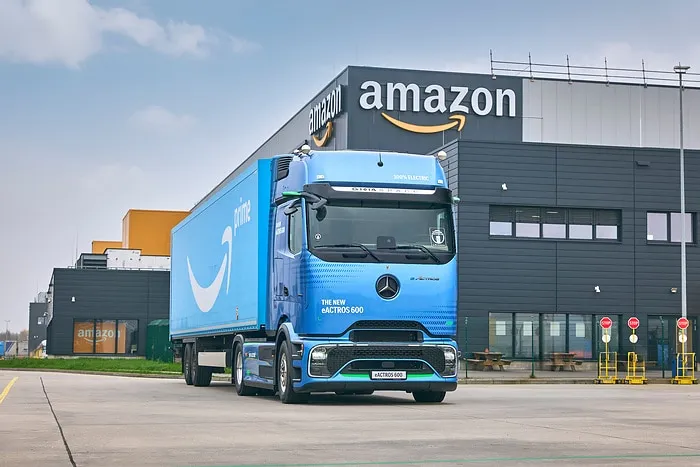
Impulse Space and SES Forge Groundbreaking Multi-Launch Agreement to Accelerate Satellite Deployment with Helios Transport Services
Impulse Space, recognized as a leader in in-space mobility solutions, has partnered with SES, a global content and connectivity provider, to revolutionize satellite deployment timelines and efficiency. The two companies today announced a multi-launch agreement that will utilize Impulse Space’s innovative Helios kick stage to dramatically shorten the time it takes for SES satellites to reach their final operational orbits. Whether destined for geostationary orbit (GEO) or medium Earth orbit (MEO), the Helios system is designed to transport satellites from low Earth orbit (LEO) directly to these high-energy orbits within hours—significantly accelerating deployment compared to traditional methods.
A New Era for Satellite Deployment Speed and Efficiency
Traditionally, deploying satellites to GEO or MEO has presented a series of logistical and financial challenges. Satellite operators have historically faced a choice between booking expensive and limited heavy-lift rocket launches capable of delivering payloads directly to their final orbits or opting for multi-month journeys using electric propulsion systems. These electric propulsion methods, while cost-effective, tend to extend the time it takes for satellites to reach their designated orbital positions, delaying service commencement and reducing satellite operational lifespans.
Impulse Space’s Helios kick stage disrupts this paradigm by enabling rapid, reliable transport of payloads from LEO to high-energy orbits within mere hours after launch. This capability drastically reduces the time needed for satellites to become operational, opening new possibilities for satellite operators to respond swiftly to market demands or urgent deployment needs.
Details of the First Mission
The inaugural mission under this multi-launch agreement is currently planned for 2027. It will feature a dedicated deployment from a medium-lift launcher placing SES’s satellite payload into LEO. From there, Helios will take over and transfer the approximately 4-ton-class payload directly to GEO, achieving orbit insertion within eight hours of launch. This rapid transit represents a transformational leap over conventional methods, which can take weeks or months.
The agreement also leaves room for additional missions in the future, giving SES the flexibility to launch satellites rapidly and responsively to their targeted orbits on demand. This on-demand capability promises to enhance SES’s operational agility, enabling faster service rollouts and the ability to adapt quickly to evolving customer requirements.
The Impact of Helios on the Satellite Industry
Helios’ innovative design and propulsion system enable significant operational advantages. For satellite manufacturers and operators, this means the potential to optimize satellite design by reducing the mass and complexity associated with propulsion systems needed for orbit-raising maneuvers. Since Helios handles the heavy-lifting from LEO to GEO or MEO, satellites can be designed with simpler propulsion requirements, reducing launch mass and potentially lowering production costs.

Furthermore, Helios’s rapid orbit insertion extends the operational lifespan of satellites by minimizing the time spent in transfer orbits. This efficiency leads to better returns on investment for satellite operators, who can deliver services more quickly and reliably to end customers.
Statements from Industry Leaders
Adel Al-Saleh, CEO of SES, highlighted the significance of the collaboration: “At SES, we are firm believers that co-development and collaboration with our partners will help the space industry to evolve and quicken the pace of innovation. Today, we’re not only partnering with Impulse to bring our satellites faster to orbit, but this will also allow us to extend their lifetime and accelerate service delivery to our customers. We’re proud to become Helios’ first dedicated commercial mission.”
His remarks emphasize how strategic partnerships and cutting-edge technology are critical to driving industry-wide progress in space operations.
Tom Mueller, founder and CEO of Impulse Space, echoed this sentiment: “We believe MEO and GEO play a critical role in the space economy, but operators today face the challenges of slow, expensive, and inflexible access to these essential orbits. Helios changes that—it’s built to move large payloads to high-energy orbits quickly and reliably. SES has a long history of embracing innovation and pushing our industry forward, and we’re proud they’ve chosen Helios to support the next phase of their deployment strategy.”
Mueller’s statement underlines how Helios is poised to address long-standing barriers in satellite deployment by offering a new level of speed, flexibility, and cost-effectiveness.
A Landmark Commercial Contract for Helios
This agreement marks a milestone for Impulse Space as it secures its first commercial contract for a dedicated Helios mission. Unlike rideshare missions where multiple smaller payloads share a ride and limit operational flexibility, this dedicated mission involves a single 4-ton-class payload fully leveraging Helios’s performance capabilities. This setup allows for optimized mission planning and maximized operational efficiency, setting a precedent for future satellite launches.
Broader Industry Implications
The implications of this partnership extend beyond just SES and Impulse Space. By enabling rapid deployment of satellites to GEO and MEO, Helios can help accelerate the growth of global connectivity networks, enhance satellite-based data services, and improve resilience in communication infrastructure. This can be particularly impactful in delivering broadband access to remote or underserved regions, supporting disaster recovery efforts, and enabling next-generation applications that rely on low-latency, high-throughput satellite communications.
Furthermore, the ability to respond quickly to satellite failures or market demand with on-demand launches and rapid orbit insertion could transform how satellite constellations are managed and maintained, ushering in a more agile space economy.
As the space sector evolves, innovations like Impulse Space’s Helios kick stage and strategic partnerships with operators like SES are vital to unlocking new possibilities. The upcoming 2027 mission will serve as a critical demonstration of Helios’s capabilities and set the stage for a new era of satellite deployment that is faster, more flexible, and more cost-efficient.
SES and Impulse Space’s collaboration exemplifies how technological innovation and cooperative approaches can push the boundaries of what is possible in space operations, delivering real-world benefits to businesses and consumers alike.




